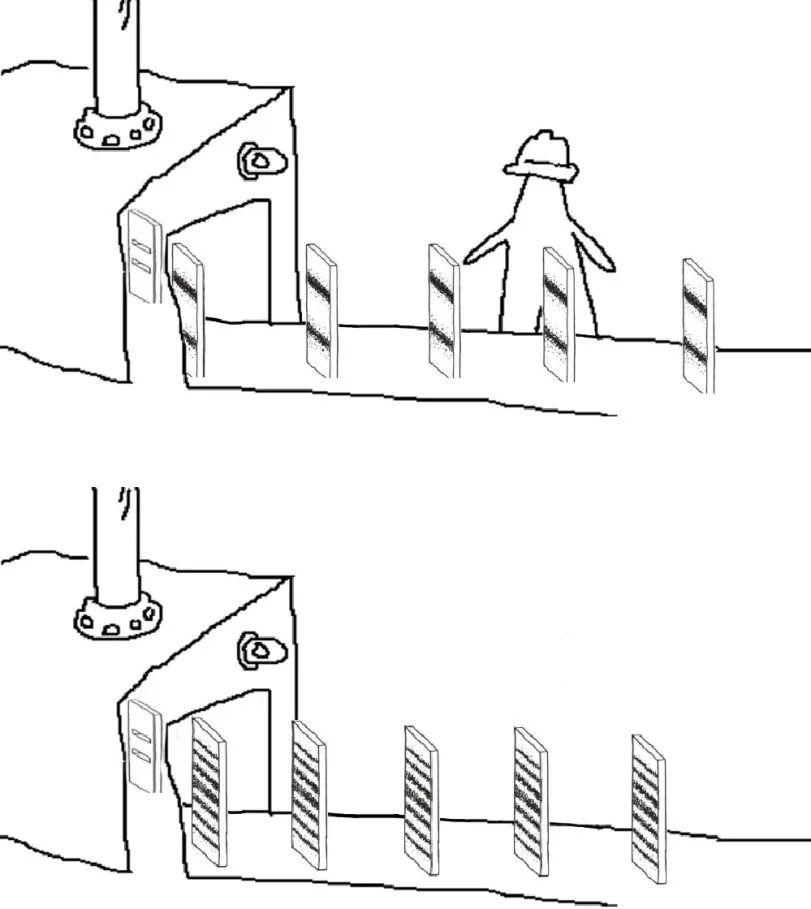this post was submitted on 23 Feb 2025
795 points (97.9% liked)
Science Memes
14519 readers
2230 users here now
Welcome to c/science_memes @ Mander.xyz!
A place for majestic STEMLORD peacocking, as well as memes about the realities of working in a lab.

Rules
- Don't throw mud. Behave like an intellectual and remember the human.
- Keep it rooted (on topic).
- No spam.
- Infographics welcome, get schooled.
This is a science community. We use the Dawkins definition of meme.
Research Committee
Other Mander Communities
Science and Research
Biology and Life Sciences
- !abiogenesis@mander.xyz
- !animal-behavior@mander.xyz
- !anthropology@mander.xyz
- !arachnology@mander.xyz
- !balconygardening@slrpnk.net
- !biodiversity@mander.xyz
- !biology@mander.xyz
- !biophysics@mander.xyz
- !botany@mander.xyz
- !ecology@mander.xyz
- !entomology@mander.xyz
- !fermentation@mander.xyz
- !herpetology@mander.xyz
- !houseplants@mander.xyz
- !medicine@mander.xyz
- !microscopy@mander.xyz
- !mycology@mander.xyz
- !nudibranchs@mander.xyz
- !nutrition@mander.xyz
- !palaeoecology@mander.xyz
- !palaeontology@mander.xyz
- !photosynthesis@mander.xyz
- !plantid@mander.xyz
- !plants@mander.xyz
- !reptiles and amphibians@mander.xyz
Physical Sciences
- !astronomy@mander.xyz
- !chemistry@mander.xyz
- !earthscience@mander.xyz
- !geography@mander.xyz
- !geospatial@mander.xyz
- !nuclear@mander.xyz
- !physics@mander.xyz
- !quantum-computing@mander.xyz
- !spectroscopy@mander.xyz
Humanities and Social Sciences
Practical and Applied Sciences
- !exercise-and sports-science@mander.xyz
- !gardening@mander.xyz
- !self sufficiency@mander.xyz
- !soilscience@slrpnk.net
- !terrariums@mander.xyz
- !timelapse@mander.xyz
Memes
Miscellaneous
founded 2 years ago
MODERATORS
you are viewing a single comment's thread
view the rest of the comments
view the rest of the comments

Yes, thats a very easy demonstation of the wave nature of light, what bugs me is the demonstration that it's also a particle that I feel is misleading. Maybe particle is not the right word to describe it's nature.
You see it behave as a particle when you cover a slide and it simply passes through the single slit.
“Particle” is the right word to describe the nature of a photon, and so is “wave.” When you collapse a wave function by “observing it” - basically the wave/particle interacting with something - you find it as a particle somewhere.
Eg, imagine an atom surrounded by electrons. Until the electrons are “observed” - interact with something - they exist in a probabilistic “electron cloud.” Depending on energy level and sub shell (ie, the “quantum numbers” you might have encountered in chemistry - remember 1s^2 2s^2 2p^6?) there are places that the electron is more likely to be. An electron in 1s is likely to be closer to the atoms nucleus when observed. But it could also be on the opposite side of the universe - small chance, but possible. It exists as a probabilistic wave though until that wavefunction is “collapsed.” (One of the silly things I like to point out when teaching is that conceivably all of your electrons could be out for a trip, and you could just phase through your chair)
This is why the photons going through the a single slit will behave like particles, and those through the double slit will behave like waves. They aren’t “collapsed” at the double slit. The single slit will only allow them to pass through as a particle.
But the vocab is unambiguous and correct - they are both “particles” and “waves.”
Yes they are both particles and waves, but "collapse" is also purely a mathematical trick and isn't something that physically occurs. Quantum theory is a statistical theory and like all statistical theories, you model the evolution of the system statistically up until it gets to the point you want to make a prediction for. But state vector notation (the "wave function") is just a mathematical convenience that works when you are dealing with a system in a pure state that is only subject to Schrodinger evolution. It doesn't work when a system undergoes decoherence, which follows the Born rule, and that says to compute the square magnitude of the state vector. But if you compute the square magnitude of the state vector, you get a new vector that is no longer a valid state vector.
Conveniently, whenever a system is subject to decoherence/Born evolution, that happens to be a situation when you can acquire new physical information about a system, whereas whenever it is subject to Schrodinger evolution, that corresponds to a situation when you cannot. People thus do this mathematical trick where, whenever a system undergoes decoherence/Born evolution, they take pause their statistical simulation, grab the new information provided about the system, and plug it back into the state vector, which allows them to reduce one probability amplitude to 1 and the rest to 0, which gives you a valid state vector again, and then they press play on their statistical simulation and carry it on from there.
This works, yes, but you can also pause a classical statistical simulation, grab new information from real-world measurements, and plug it in as well, unpause the simulation, and you would also see a sudden "jump" in the mathematics, but this is because you went around the statistical machinery itself into the real world to collect new information to plug into the computation. It doesn't represent anything actually physically occurring to the system.
And, again, it's ultimately just a mathematical trick because it's easier to model a system in a pure state because you can model it with the state vector, but the state vector (the "wave function") is simply not fundamental in quantum mechanics and this is a mistake people often make and get confused by. You can evolve a state vector according to Schrodinger evolution only as long as it is in a pure state, the moment decoherence/Born evolution gets involved, you cannot model it with the state vector anymore, and so people use this mathematical trick to basically hop over having to compute what happens during decoherence, and then delude themselves into thinking that this "hop" was something that happened in physical reality.
If you want to evolve a state vector according to the Schrodinger equation, you just compute U(t)ψ. But if you instead represent it in density matrix form, you would evolve it according to the Schrodinger equation by computing U(t)ψψᵗU(t)ᵗ. It obviously gets a lot more complicated, so in state vector form it is simpler than density matrix form, so people want to stick to state vector form, but state vector form simply cannot model decoherence/Born evolution, and so this requires you to carry out the "collapse" trick to maintain in that notation. If you instead just model the system in density matrix form, you don't have to leave the statistical machinery with updates about real information from the real world midway through your calculations, you can keep computing the evolution of the statistics until the very end.
What you find is that the decoherence/Born evolution is not a sudden process but a continuous and linear process computed with the Kraus operators using ΣKᵢ(t)ρKᵢ(t)ᵗ and takes time to occur, cannot be faster than the quantum speed limit.
While particles can show up anywhere in the universe in quantum mechanics, that is corrected for in quantum field theory. A particle's probability of showing up somewhere doesn't extend beyond its light cone when you introduce relativistic constraints.
Ah, but the “concievably, all of the electrons in your body could be out to lunch at once and allow you to phase through your chair” is an engaging little factoid. Perhaps exaggerated, but it’s hard to get my audience (10+ - general audience) to understand the idea of an electron cloud without a little exaggeration.
Forgive me my sins, I’ll say five “Hail Dirac’s” and build an ikon to Bohr.
I do appreciate the math - I managed to take Quantum without having taken linear algebra, so there’s often lacuna there.